
"Should I dilute my essential oils in a carrier oil before applying them onto my skin?" This is a common question these days as more and more people begin to use essential oils.
The answer to this question is YES! Combining essential oils with a carrier oil offers both increased safety and effectiveness with topical use. Experts agree, essential oils should be diluted in carrier oils for multiple reasons.
You may be wondering, "What is a carrier oil, and how is it different from an essential oil?"
This post contains affiliate links. If you choose to purchase items or services through these links, we may earn a small commission at no extra cost to you.
What is a carrier oil?
A carrier oil is a pressed extraction of plant parts, such as nuts, seeds, or fruit. The fatty oils are squeezed from the plant and includes valuable vitamins, minerals, fatty acids, and phytonutrients that help to nourish the skin. While carrier oils can have a nutty or slightly sweet scent, they do not have the complex aroma profile of essential oils.
How is an essential oil different from a carrier oil?
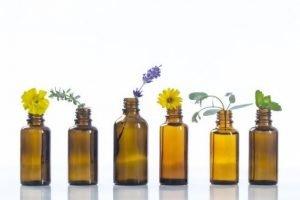
First, an essential oil differs from a carrier oil based on the extraction method. Secondly, only about 1% of plants produce essential oil. This light aromatic component is typically steam distilled, and only the most chemically volatile components of the plant are extracted.
Thus, essential oils do not contain any vitamins or minerals, because these components are too heavy to get steam distilled. Essential oils only include the parts of the plant material with a light molecular weight. These are described as "volatile," because they are so light, and easily evaporate.
Essential oils have valuable therapeutic benefits but are also made up of the most chemically reactive components of plant matter. Thus, they have a much lower therapeutic margin. This means, when using essential oils, a small amount goes a very long way. Using too much of an essential oil not properly diluted may cause an unpleasant reaction.
Why should I dilute my essential oils with carrier oils?
Now that you know the difference between a carrier oil and an essential oil, there are three valuable reasons to dilute your essential oils.
1. Dilute with carrier oils for SAFETY reasons.
Did you know, essential oils applied neat (undiluted) to the skin can cause unpleasant skin irritations? Experts agree, it is very important to dilute!
Essential oils can have valuable therapeutic properties for the skin. Some are analgesic, antimicrobial, anti-inflammatory, antioxidant, or regenerative. But just a tiny amount is needed, and best used when combined with a carrier oil.
2. Dilute with carrier oils for therapeutic benefits.
Did you know that carrier oils offer therapeutic benefits to the skin that essential oils cannot? Carrier oils contain valuable vitamins, minerals, and fatty acids that moisturize and nourish the skin. Essential oils do not contain any vitamins, minerals, or fatty acids.
Plus, carrier oils help aid in the absorption of essential oils by reducing evaporation. Essential oils, which are very light in weight, are considered "volatile." This means they are chemically reactive and evaporate rapidly. Therefore, when essential oils are mixed with a heavier carrier oil, they don't evaporate as fast, and therefore have a greater opportunity to absorb along with the carrier oil into the skin.
Generally, lighter carrier oils permeate the skin at a higher rate than thicker carrier oils. Thicker carrier oils tend to be more nourishing for very dry skin.
3. Dilute with carrier oils to save money.
Tiny bottles of essential oil can be quite pricey. The price per ounce of an essential oil can be as much as ten times higher or more than for the same amount of a carrier oil. Thus, diluting makes using essential oils safer, more effective, and more affordable!
How should I dilute my essential oils?
When making a general body lotion for adults, it is recommended to dilute essential oils to two percent in a carrier oil. This is equal to about 10 - 12 drops of essential oil per ounce of carrier oil.
For preparing an essential oil to apply on just a small local area, a five percent dilution can be made. This equals about 25-30 drops of essential oil per ounce of carrier oil.
There are exceptions to consider when using and diluting essential oils.

For those with sensitive skin, the elderly, pregnant ladies, and children: dilute essential oils twice as much, or more.
Review possible contraindications of essential oils before use. Certain essential oils are not appropriate for young children, pregnant women, and those with certain medical considerations.
Especially for those with sensitive skin, apply a skin patch test to a small area before using an essential oil blend all over the body or on exposed areas like the face.
How can I do a skin patch test?
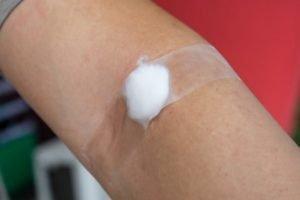
Conducting a skin patch test is always a good idea before trying a new skin care ingredient. It is especially important for people to try out a small area first if they have sensitive skin.
To conduct a test, first dilute your essential oil in a carrier oil per the guidelines listed above. Then, place a pea sized amount on your inner forearm or back. Last, apply a waterproof bandage over the small area. Check it after about 12-24 hours.
If there is any burning or itching before then, wash the area off with soap and water. For a more rapid removal of the essential oil blend from the skin, pour milk or olive oil over the affected area.
If there are no reactions within the skin patch tested area, it is safe to use the diluted blend you have created. Keep in mind that topical reactions can be situational, based on stress, medications, illness, and other varying conditions.
With the use of any skincare products, discontinue applying it to your body if you have any reactions. Check with your Doctor for possible contraindications related to medical conditions or any other concerns.
Here are a few pointers when buying carrier oils.
It is just as important to buy high quality carrier oils as it is to buy good essential oils. Always choose carrier oils from a reputable source, check the expiration date, and try to choose cold pressed and organic carrier oils that have not been refined. Do not put anything on your skin that you do not feel good about!
What is a hot pressed versus a cold pressed oil?
Hot processed oils are usually more affordable. However, the heat during processing can destroy fatty acids and other important nutrients. Further, heat can oxidize an oil, and make some of its ingredients harmful.
Using a cold pressed method for extraction results in less changes to the natural form of carrier oils rich in omega fats, vitamins, and minerals. These components are great for the skin! Thus, it is preferable to buy cold pressed oils.
Also look for the term, "unrefined," as this means chemicals have not been used to bleach, deodorize, or alter the carrier oil.
Why should I choose an organic carrier oil?
Organic produce is grown without the use of harmful chemicals, including pesticides, fertilizers, and biocides. The skin is the largest organ of absorption of the body, and it is important to avoid the topical use of harsh chemicals. Look for an organic product to have the official USDA organic logo.
Which carrier oil should I choose?
This is a very good question! There are many carrier oils on the market these days. Some of my favorites for using topically include jojoba oil, almond oil, avocado oil, coconut oil, and sunflower oil. Many of my massage recipes also include shea butter and beeswax.
Below is a bit more information on each of these carrier oils. Plus, at the end of this article, there are three of my favorite easy at home topical recipes.

Jojoba Oil
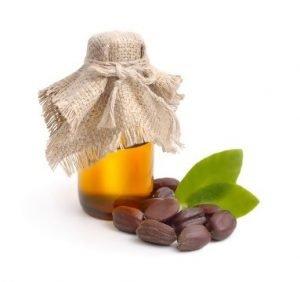
Jojoba oil ( Simmondsia sinensis) comes from a Southwestern American evergreen dessert shrub. Seeds are pressed to make a liquid wax. The consistency of the oil is very light, and similar to our own skin's sebum. Thus, it absorbs easily. Plus, it does not contain heavy triglyceride fats, so it has a very long shelf life.
I like jojoba oil because you can apply it to your face without clogging pores. It is also helpful for a variety of skin issues, including eczema, psoriasis, wrinkles, inflammation, and dry skin. It even works great on brittle nail cuticles or to shine hair that has become dull.
Jojoba oil is my golden choice of carrier oils. It is primarily composed of wax esters, including a significant amount of vitamin E, and essential fatty acids including oleic acid.
Sweet Almond Oil
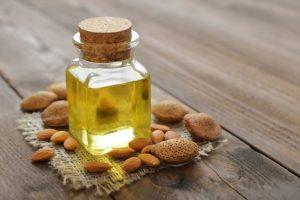
Sweet Almond Oil ( Prunus dulcis) comes from the almond tree, which belongs to the rose family. The carrier oil is made from the pressed kernels.
The oil's consistency is light, non-greasy, and absorbs easily. Plus, it has minimal aroma and a longer shelf life than most carrier oils.
It is my personal favorite carrier oil to have on hand for blending with essential oils. It is low in cost, lasts a long time, and has a light consistency.
Plus, sweet almond oil is rich in vitamins A, B & E, as well as the minerals: magnesium, calcium, zinc, and iron. It also contains valuable proteins, glucosides and linoleic acid. It is skin nourishing, conditioning, and makes a good emollient. Finally, it is also helpful for dry, itchy, or irritated skin.
Avocado Oil

Avocado Oil ( Persea gratissima or P. Americana) is expressed from the green flesh of the avocado fruit. This mono-unsaturated oil is thick and high in fatty acids and vitamins.
With its thicker consistency, it is good to mix with lighter carrier oils. It has a shelf life of about one to two years.
Avocado oil is excellent for dry and damaged skin. In addition to offering deep moisturization, it is also a good emollient. Nutrients include omega-3 fatty acids, beta carotene, and vitamin A, B, D, and E. Minerals include potassium, phosphorus, magnesium, calcium, sodium, and copper.
Sunflower Oil

Sunflower oil, from the plant Helianthus annus, is light and sweet. Oil is pressed from the seeds, with a shelf life of about two years.
The oil is high in unsaturated fatty acids including oleic acid. It also contains lecithin and vitamins A, B, D, and E, and the minerals calcium, zinc, potassium, iron, and phosphorus.
The oil penetrates the skin well without leaving a greasy texture. It is a good emollient that helps soften and moisturize the skin. It may also help relieve mild skin irritation.
Coconut Oil
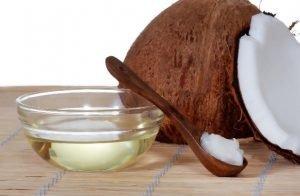
Coconut oils (from Cocos nucifera) are extracted from the meaty white flesh inside of the coconut. Unrefined coconut oil is a solid at room temperature and has a strong coconut aroma. Fractionated coconut oil is a liquid at room temperature and does not have a strong aroma.
Coconut oil absorbs easily and offers a protective layer to the skin. It is lubricating, emulsifying, and can even be conditioning for the hair. Shelf life of unrefined coconut oil is about two years. Fractionated coconut oil can last even longer, but has less nutrients than unrefined oil.
Coconut oil is high in medium chain triglycerides, which absorb more easily than some other fats into the skin. These include lauric acid. Unrefined coconut oil also has a small amount of vitamin E.
Additional ingredients to use in topical recipes often include butters and waxes.
Many of my recipes include shea butter and beeswax. These two ingredients have benefits to the skin and help create a nice thick lotion or nourishing salve.
Typically, recipes call for butters and waxes to be heated to a low temperature using a double boiler. It is important not to heat these ingredients to a temperature that is too high and could damage the healthy value of the ingredients.
Once you have melted the butters or wax, you can easily combine them with lighter carrier oils and essential oils.
Shea Butter
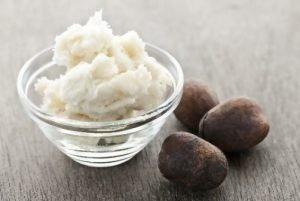
Shea Butter ( Butyrospermum parkii) comes from the nut of a shea trees that grows in Africa. Dried nuts are smashed into a paste and boiled until the shea butter floats to the top. Butter is solid at room temperature. It has a one-year shelf life.
Shea butter is thick and deeply moisturizing. It may help with sun protection, scars, stretch marks, eczema, burns, wrinkles. Plus, it is also a good emollient. Butters, including cocoa butter and shea, can leave a greasy texture on the skin. Thus, it is a good idea to mix them with lighter carrier oils in topical recipes.
Beeswax
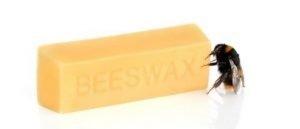
Hydrating, healing, and soothing, beeswax ( Cera alba) is often added to salve recipes. It is skin protective, softening, anti-inflammatory, regenerative, and antimicrobial. Further, it is rich in vitamin A.
Since it is made by bees, it should be avoided by people with allergies to honey.
Here are some easy at home recipes using carrier oils with essential oils.
Below are three easy recipes using the carrier oils mentioned in this article.
- Easy Massage Therapy Lotion
- Avocado Oil Lotion for Dry Skin
- Happy Hair Hot Oil Treatment
Easy Massage Therapy Lotion

I mix up a fresh bowl full of this recipe weekly, to use with my massage therapy clients. It looks like whipped cream and has a delightful consistency. Plus, it's so fresh and natural, and takes less than 15 minutes to make! Customize it with the carrier oils and essential oils you like best. For personal at home use, you may want to cut the recipe quantity in half.
Ingredients
- 21 ounces of shea butter
- 7 ounces of carrier oils (any combination of the following: jojoba, sweet almond, coconut, sunflower, or avocado)
- 150 drops of an essential oil(s) (optional)
Instructions
- First, melt the shea butter using a double boiler.
- Once melted, mix the shea with the carrier oils in a high-powered bowl mixer for 4 minutes on low.
- Then, continue to mix the ingredients for an additional 4 minutes on high, until the consistency is like whipped cream.
- Last, add the essential oil(s), if desired, for the last 60 seconds of mixing.
- Store in a sealed container for up to two weeks. Be sure to label the container with the date made and ingredients used.
- To use, scoop about 2 Tablespoons from the container and massage onto the skin. Discontinue use if any irritation occurs.
The recipe could last up to the expiration date of the carrier oils used, if kept in a sealed container. It may require re-whipping after about a week.
It is important to label the container with the ingredients so you can make the same recipe again if you like it. Plus, if you are using the recipe on others, some people may have allergies to certain ingredients.
You may be wondering what essential oils are good to use with this recipe. I like to create blends with some of the following oils: lavender, cedarwood, black pepper, petitgrain, patchouli, ginger, helichrysum, chamomile, bergamot, juniper berry, lemon eucalyptus, or a small amount of peppermint.
Here are a few of my favorite essential oil combinations.
- To relax: combine 20 drops of cedarwood, 80 drops of lavender, and 50 drops of patchouli.
- To improve flow: combine 25 drops of black pepper, 50 drops of ginger, 50 drops of helichrysum, and 25 drops of lemon eucalyptus.
- For aching muscles: combine 30 drops of juniper berry, 30 drops of cedarwood, 30 drops of lavender, 30 drops of peppermint, and 30 drops of black pepper.
Review contraindications of essential oils before use. Some oils are inappropriate for young children, pregnant women, and those with certain medical conditions. Skin patch test before use, especially with sensitive skin.
Avocado Oil Lotion for Dry Skin

This lotion works great for people with very dry skin. I especially like to use it on hands and feet!
Ingredients
- 2 Tbsp of shea butter
- 1 Tbsp of beeswax
- 1/4 cup of avocado oil
- 1/4 cup of coconut oil
- 10 drops of lavender essential oil
- 10 drops of German chamomile essential oil
Instructions
-
In a double boiler, melt the shea butter and beeswax.

- Once melted, pour the shea butter and beeswax in a mixing bowl with the avocado and coconut oil. Mix the ingredients together in a high-powered bowl mixer for 4 minutes on low.
- Then, continue to mix the ingredients for an additional 4 minutes on high, until the consistency becomes thick and whipped.
- Finally, add the essential oils for the last 60 seconds of mixing.
- Store in a sealed container for up to two weeks. Label the container with the date made and ingredients. If kept in a sealed container, the recipe can last as long as the earliest expiration date for any of the included carrier oils. It may require re-whipping after a week.
- To use, scoop about 1 Tablespoons from the container and massage onto the skin.
This recipe is not for babies (because of the beeswax) and should be avoided by those with allergies to honey. Discontinue use if any irritation occurs. Please skin patch test before use, especially if you have sensitive skin.
Happy Hair Hot Oil Treatment

I like to use this recipe to shine and condition my hair. With just three ingredients, it is as quick as a snap to mix together. Plus, I love the tropical smell of the coconut oil combined with the lime.
Ingredients
Instructions
- Place all three ingredients together in a small container.
- Float the container in a sink of hot tap water until the contents are warm.
- Shake or stir well.
- Apply the recipe onto your hair. Then wrap your hair in a clean plastic bag, saran wrap, or a plastic shower cap.
- Wait 30 minutes and then rinse your hair.
Avoid sun exposure with the use of citrus juices or essential oils on or near the skin. Skin patch test with sensitive skin and discontinue use if any irritation occurs.

Kathy Sadowski has a Master of Science degree in Aromatherapy from the American College of Healthcare Sciences. With a passion for reading scientific studies on herbs and essential oils, she has developed the website www.EarthtoKathy.com, which categorizes 4,000 plus scientific research articles on plants by species, therapeutic action, and constituent. The goal is to demonstrate a growing amount of evidence for the potential healthful uses of herbs and essential oils. Kathy is a professional member of NAHA and AIA, Registered Aromatherapist (ARC), licensed massage therapist, and enthusiast for environmental protection and a natural lifestyle.
